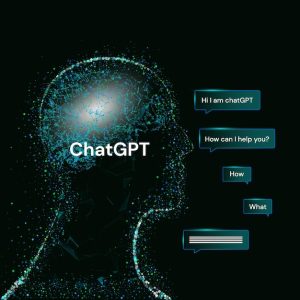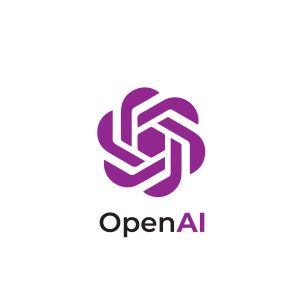OpenAI’s New Leap: The ‘Preparedness Framework’ for AI Risks
Artificial intelligence (AI) is a powerful and transformative technology. It can improve many aspects of human life, such as health, education, entertainment, and productivity. But AI also poses significant risks and challenges, such as ethical dilemmas, social impacts, security threats, and existential threats. How can we ensure that AI is aligned with human values and goals, and that it does not cause harm or destruction?
This is the question that OpenAI, a research organization dedicated to creating and ensuring the safe and beneficial use of AI, is trying to answer. OpenAI is known for its groundbreaking achievements in AI, such as GPT-3, DALL-E, and Codex. But OpenAI is also aware of the potential dangers of AI, especially as it becomes more powerful and autonomous. That is why OpenAI has recently proposed a new ‘Preparedness Framework’ for AI risks, a novel way to anticipate and mitigate the potential harms of artificial intelligence.
What is the ‘Preparedness Framework’ for AI Risks?
The ‘Preparedness Framework’ for AI risks is a set of principles and practices that aim to help researchers, developers, policymakers, and users of AI to prepare for and respond to the possible negative outcomes of AI. The framework is based on the idea that AI risks are not inevitable, but rather depend on the choices and actions of humans. Therefore, by being proactive and responsible, we can reduce the likelihood and severity of AI risks, and increase the chances of positive and beneficial outcomes.
The framework has four main components: anticipation, prevention, detection, and response. Each component involves a different process and goal, as shown in the table below:
| Component | Process | Goal |
|---|---|---|
| Anticipation | Identify and analyze the potential risks and benefits of AI, as well as the uncertainties and assumptions involved. | Understand the possible scenarios and implications of AI, and prioritize the most important and urgent issues to address. |
| Prevention | Design and implement measures to prevent or reduce the occurrence or impact of AI risks, such as technical safeguards, ethical guidelines, legal regulations, and social norms. | Ensure that AI is aligned with human values and goals, and that it respects the rights and interests of all stakeholders. |
| Detection | Monitor and evaluate the performance and behavior of AI systems, as well as the feedback and reactions of users and society. | Identify and measure the actual risks and benefits of AI, and spot any anomalies, errors, or harms that may arise. |
| Response | Take actions to correct, mitigate, or compensate for the negative effects of AI, as well as to amplify and disseminate the positive effects. | Restore the trust and confidence in AI, and learn from the experience and improve the future outcomes. |
The framework is not a rigid or prescriptive formula, but rather a flexible and adaptive guide that can be applied to different types of AI systems, domains, and contexts. The framework also encourages collaboration and communication among different actors and stakeholders, such as researchers, developers, users, regulators, and civil society, to foster a shared understanding and responsibility for AI risks.
Why You Should Care About the ‘Preparedness Framework’ for AI Risks
The ‘Preparedness Framework’ for AI risks is important for several reasons. Here are some of them:
- It acknowledges the complexity and uncertainty of AI risks, and the need for a holistic and systemic approach to address them. AI risks are not isolated or static, but rather interconnected and dynamic, influenced by various factors and feedback loops. Therefore, a simple or linear solution is not sufficient or effective, and a comprehensive and iterative solution is needed.
- It emphasizes the human agency and accountability for AI risks, and the need for a proactive and responsible attitude to deal with them. AI risks are not inevitable or predetermined, but rather depend on the choices and actions of humans. Therefore, a passive or fatalistic attitude is not helpful or ethical, and an active and constructive attitude is required.
- It provides a practical and actionable way to deal with AI risks, and the need for a concrete and realistic plan to implement it. AI risks are not abstract or hypothetical, but rather concrete and imminent, requiring urgent attention and action. Therefore, a vague or idealistic way is not useful or credible, and a specific and feasible way is necessary.

How to Use the ‘Preparedness Framework’ for AI Risks
The ‘Preparedness Framework’ for AI risks can be used for different types of AI systems, domains, and contexts, depending on the specific characteristics and challenges involved. However, a general process can be followed to use the framework, as shown in the previous table.
To illustrate how the framework can be used, let’s take an example of GPT-3, one of the most advanced and popular AI systems developed by OpenAI. GPT-3 is a deep learning model that can generate natural language texts based on a given input or prompt. GPT-3 can be used for various purposes, such as writing, chatting, summarizing, translating, and more. But GPT-3 can also pose various risks, such as misinformation, plagiarism, bias, and more.
Using the framework, we can apply the following steps to prepare for and respond to the possible risks of GPT-3:
Anticipation
We can start by identifying and analyzing the potential risks and benefits of GPT-3, as well as the uncertainties and assumptions involved. For example, we can ask ourselves:
- What are the possible scenarios and implications of using GPT-3 for text generation?
- What are the benefits and risks for different users and domains?
- What are the uncertainties and assumptions involved in the design and deployment of GPT-3?
Some of the possible answers are:
- GPT-3 can be used to generate texts for various purposes, such as education, creativity, entertainment, and more. However, GPT-3 can also be used to generate texts for malicious purposes, such as misinformation, propaganda, spam, and more.
- The benefits and risks of GPT-3 depend on the user and the domain. For example, GPT-3 can benefit students and teachers by providing educational content and feedback, but it can also harm them by producing inaccurate or misleading information, or by facilitating cheating or plagiarism. Similarly, GPT-3 can benefit writers and artists by providing creative inspiration and assistance, but it can also harm them by generating low-quality or plagiarized content, or by undermining their originality or authenticity.
- The uncertainties and assumptions involved in GPT-3 are related to its reliability, accuracy, and safety. For example, GPT-3 is based on a large corpus of text data from the internet, which may contain errors, biases, or harmful content. GPT-3 is also limited by its training objective, which is to predict the next word based on the previous words, without considering the meaning, context, or purpose of the text. GPT-3 is also vulnerable to adversarial attacks, which are deliberate attempts to fool or manipulate the model by providing misleading or malicious inputs or prompts.
Based on this analysis, we can prioritize the most important and urgent issues to address, such as ensuring the quality and validity of the data, the alignment and transparency of the objective, and the robustness and security of the model.

Prevention
Next, we can design and implement measures to prevent or reduce the occurrence or impact of GPT-3 risks, such as technical safeguards, ethical guidelines, legal regulations, and social norms. For example, we can ask ourselves:
- How can GPT-3 be designed and implemented to ensure its reliability, accuracy, and safety?
- What are the ethical guidelines and principles that should guide the use of GPT-3?
- What are the legal regulations and standards that should govern the use of GPT-3?
- What are the social norms and expectations that should shape the use of GPT-3?
Some of the possible answers are:
- GPT-3 can be designed and implemented to ensure its reliability, accuracy, and safety by using various methods, such as data filtering, model testing, output verification, and user feedback. For example, GPT-3 can use data filtering to remove or correct the errors, biases, or harmful content from the data, model testing to evaluate the performance and behavior of the model, output verification to check the quality and validity of the output, and user feedback to collect and analyze the satisfaction and experience of the users.
- The ethical guidelines and principles that should guide the use of GPT-3 are based on the values and goals of human society, such as fairness, accountability, transparency, and privacy. For example, GPT-3 should respect the rights and interests of all stakeholders, such as the creators, users, and subjects of the texts, and should provide clear and accurate information about the source, purpose, and limitations of the texts.
- The legal regulations and standards that should govern the use of GPT-3 are based on the laws and rules of human society, such as intellectual property, data protection, and consumer protection. For example, GPT-3 should comply with the laws and rules that apply to the creation, distribution, and use of the texts, and should provide appropriate attribution, consent, and disclaimer for the texts.
- The social norms and expectations that should shape the use of GPT-3 are based on the customs and conventions of human society, such as etiquette, honesty, and responsibility. For example, GPT-3 should follow
- The social norms and expectations that should shape the use of GPT-3 are based on the customs and conventions of human society, such as etiquette, honesty, and responsibility. For example, GPT-3 should follow the best practices and standards of the text generation domain, such as providing clear and accurate labels, warnings, and disclosures for the texts, and avoiding misleading or harmful texts.
By applying these measures, we can ensure that GPT-3 is aligned with human values and goals, and that it respects the rights and interests of all stakeholders.

Detection
Then, we can monitor and evaluate the performance and behavior of GPT-3, as well as the feedback and reactions of users and society. For example, we can ask ourselves:
- How can GPT-3 be monitored and evaluated to measure its actual risks and benefits?
- How can the anomalies, errors, or harms caused by GPT-3 be detected and reported?
- How can the feedback and reactions of users and society to GPT-3 be collected and analyzed?
Some of the possible answers are:
- GPT-3 can be monitored and evaluated to measure its actual risks and benefits by using various methods, such as metrics, indicators, benchmarks, and audits. For example, GPT-3 can use metrics to quantify the quality and impact of the texts, such as accuracy, relevance, diversity, and engagement, indicators to track the progress and performance of the model, such as error rate, completion rate, and satisfaction rate, benchmarks to compare the results and outcomes of the model with other models or standards, such as human performance, state-of-the-art, and best practices, and audits to verify and validate the compliance and accountability of the model, such as data audit, model audit, and output audit.
- The anomalies, errors, or harms caused by GPT-3 can be detected and reported by using various methods, such as alerts, logs, reports, and reviews. For example, GPT-3 can use alerts to notify the users and developers of any unexpected or undesirable events or behaviors, such as failures, crashes, or attacks, logs to record and store the inputs, outputs, and actions of the model, such as prompts, texts, and feedback, reports to summarize and communicate the findings and insights of the model, such as statistics, trends, and recommendations, and reviews to evaluate and improve the quality and value of the model, such as ratings, comments, and suggestions.
- The feedback and reactions of users and society to GPT-3 can be collected and analyzed by using various methods, such as surveys, interviews, experiments, and observations. For example, GPT-3 can use surveys to gather and measure the opinions and preferences of the users and society, such as satisfaction, trust, and expectation, interviews to understand and explore the experiences and perspectives of the users and society, such as challenges, opportunities, and needs, experiments to test and validate the hypotheses and assumptions of the model, such as effectiveness, efficiency, and usability, and observations to monitor and study the behavior and interaction of the users and society, such as usage, engagement, and impact.
By applying these methods, we can identify and measure the actual risks and benefits of GPT-3, and spot any anomalies, errors, or harms that may arise.

Response
Finally, we can take actions to correct, mitigate, or compensate for the negative effects of GPT-3, as well as to amplify and disseminate the positive effects. For example, we can ask ourselves:
- How can GPT-3 be corrected, mitigated, or compensated for the negative effects it may cause, such as misinformation, plagiarism, or bias?
- How can GPT-3 be amplified and disseminated for the positive effects it may have, such as education, creativity, or entertainment?
- How can the lessons learned from GPT-3 be used to improve the future outcomes of AI?
Some of the possible answers are:
- GPT-3 can be corrected, mitigated, or compensated for the negative effects it may cause by using various methods, such as feedback, correction, moderation, and compensation. For example, GPT-3 can use feedback to receive and incorporate the suggestions and criticisms of the users and society, such as corrections, improvements, and complaints, correction to fix and improve the errors or harms caused by the model, such as retractions, revisions, and apologies, moderation to control and regulate the content and quality of the model, such as filters, flags, and bans, and compensation to acknowledge and reward the victims or contributors of the model, such as credits, acknowledgments, and payments.
- GPT-3 can be amplified and disseminated for the positive effects it may have by using various methods, such as promotion, distribution, collaboration, and innovation. For example, GPT-3 can use promotion to showcase and highlight the benefits and achievements of the model, such as testimonials, awards, and endorsements, distribution to share and spread the access and availability of the model, such as platforms, channels, and networks, collaboration to cooperate and partner with other actors and stakeholders, such as researchers, developers, users, and regulators, and innovation to create and discover new and better ways of using the model, such as applications, features, and solutions.
- The lessons learned from GPT-3 can be used to improve the future outcomes of AI by using various methods, such as learning, adaptation, improvement, and prevention. For example, GPT-3 can use learning to acquire and apply the knowledge and skills gained from the model, such as data, algorithms, and best practices, adaptation to adjust and optimize the model to the changing needs and conditions, such as feedback, updates, and maintenance, improvement to enhance and refine the model to the higher standards and expectations, such as quality, performance, and value, and prevention to avoid and eliminate the potential or recurring risks and harms of the model, such as safeguards, guidelines, and regulations.
By applying these actions, we can restore the trust and confidence in GPT-3, and learn from the experience and improve the future outcomes of AI.
Conclusion
AI is a powerful and transformative technology that can bring many benefits and opportunities to human society. But AI also poses significant risks and challenges that need to be anticipated and mitigated. OpenAI’s new ‘Preparedness Framework’ for AI risks is a novel and important way to prepare for and respond to the possible negative outcomes of AI. The framework has four main components: anticipation, prevention, detection, and response, and provides a set of principles and practices that can help researchers, developers, policymakers, and users of AI to ensure the safe and beneficial use of AI. By using the framework, we can reduce the likelihood and severity of AI risks, and increase the chances of positive and beneficial outcomes.










